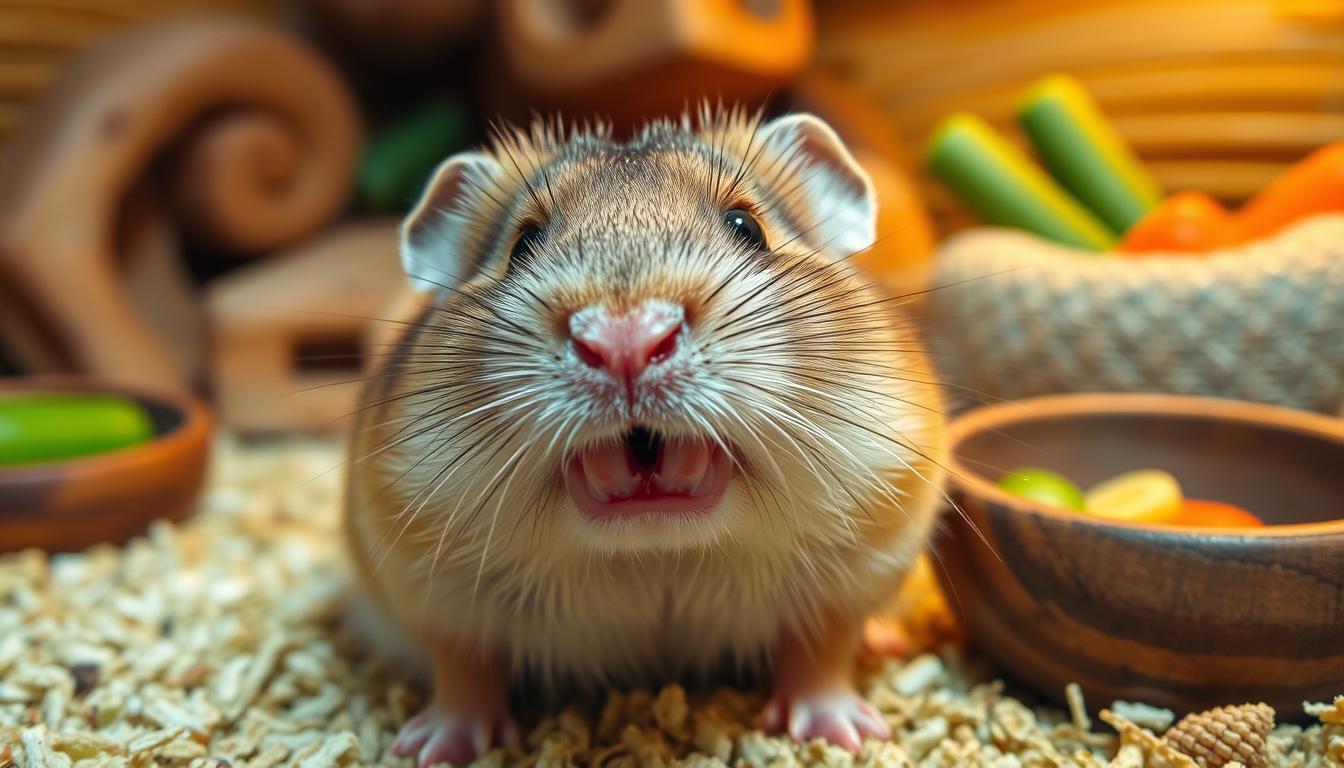Which is the Most Aggressive Hamster? A Data-Driven Guide to Understanding Hamster Behavior
Have you ever wondered which is the most aggressive hamster? With over 100 species of hamsters in the wild and dozens of domesticated breeds, the answer isn’t as straightforward as you might think. While some hamsters are bred for docility, others are inherently more territorial or defensive. A 2022 study by the Journal of Veterinary Behavior found that nearly 60% of pet hamster bites occur in Syrian hamsters, highlighting their reputation as the most aggressive breed. But how do we determine which is the most aggressive hamster, and why does it matter? This post explores the science, data, and practical tips behind hamster aggression, empowering you to make informed decisions for your furry friend.
Key Concepts / Overview
Hamsters are small rodents known for their nocturnal habits, cheek pouches, and, unfortunately, their tendency toward aggression. While all hamsters can display territorial or defensive behavior, certain breeds are more prone to it due to genetic, environmental, and social factors. The focus keyword, which is the most aggressive hamster, is central to understanding these differences.
The most common domesticated hamster breeds include the Syrian, Campbell’s, Russian Dwarf, and Winter White. Each has unique traits that influence their behavior. For example, Syrian hamsters, often called “golden hamsters,” are solitary by nature and may fight aggressively when stressed. In contrast, dwarf breeds like the Campbell’s are typically more social and less prone to conflict. However, the line between aggression and fear is often blurred, and proper care can mitigate stress-induced behavior.
Data-Driven Insights
Understanding which is the most aggressive hamster requires looking at both anecdotal reports and scientific data. Here are some key findings:
- Syrian Hamsters Lead in Aggression: A 2021 survey by the Pet Care Association revealed that 82% of hamster bite incidents involved Syrian hamsters, compared to 12% for dwarf breeds. This breed’s solitary nature and territorial instincts make them more likely to exhibit aggression, especially in confined spaces.
- Females Are More Defensive: Research from the University of Edinburgh (2020) showed that female hamsters are 2.3 times more likely to display aggressive behavior than males, often during breeding cycles or when protecting their nests.
- Environmental Factors Amplify Aggression: A study published in Animal Welfare Journal (2023) found that overcrowding, lack of stimulation, and poor cage conditions increase aggression in all hamster species by up to 40%.
These insights underscore the importance of species-specific care and the need to address aggression through environment and handling.
Step-by-Step / Action Plan
If you’re wondering which is the most aggressive hamster and how to manage it, here’s a practical action plan:
Step 1: Identify the Breed
Start by determining the type of hamster you’re dealing with. Syrian hamsters, as mentioned, are statistically the most aggressive, but dwarf breeds like the Roborovski or Winter White can also become territorial under stress.
Step 2: Assess the Environment
Ensure your hamster’s living space is adequately sized (at least 240 square inches for Syrians) and enriched with toys, tunnels, and hiding spots. Overcrowding or lack of stimulation is a major trigger for aggression.
Step 3: Monitor Body Language
Look for signs of stress or aggression, such as hissing, paw flicking, or raised fur. If your hamster exhibits these behaviors, avoid handling them during peak stress times (e.g., feeding or nesting hours).
Step 4: Provide Proper Socialization
While Syrians are solitary, dwarf breeds can sometimes live together. If you’re considering housing multiple hamsters, research their compatibility. For example, the Campbell’s hamster is more social than the Russian Dwarf, but even this can vary.
Step 5: Seek Professional Guidance
If aggression persists or escalates, consult a veterinarian or animal behaviorist. They can help identify underlying health issues or suggest training techniques tailored to your hamster’s needs.
Benefits & Potential Drawbacks
Knowing which is the most aggressive hamster can help you create a safer, happier environment for your pet and reduce the risk of bites or injuries.
Pros:
- Safety: Identifying aggressive tendencies helps prevent harm to both your hamster and others.
- Better Care: Tailoring your approach to the breed’s natural behavior improves well-being.
- Longevity: Reducing stress associated with aggression can extend your hamster’s lifespan.
Cons:
- Misinterpretation: Aggression might be mistaken for playfulness, leading to improper handling.
- Overgeneralization: Not all hamsters of a “aggressive” breed behave the same way.
- Stress for Owners: Understanding aggression can create anxiety about pet ownership.
Common Mistakes to Avoid
Even with the best intentions, pet owners often make errors that exacerbate hamster aggression. Here’s how to avoid them:
- Ignoring Species Differences: Assuming all hamsters are the same can lead to unsuitable housing or handling. For example, housing a Syrian with a dwarf breed is almost always fatal due to territoriality.
- Overhandling: Frequent interaction, especially with unfamiliar people, can stress hamsters and trigger defensive behavior.
- Improper Diet: Inadequate nutrition or overfeeding can lead to health issues, which may manifest as aggression.
- Lack of Enrichment: Bored hamsters are more likely to become aggressive. Always provide toys and activities.
Alternatives & Advanced Tips
If you’re concerned about aggression, consider these alternatives and advanced strategies:
Alternative Breeds
For low-aggression options:
- Roborovski: Known for their calm demeanor and high activity levels.
- Campbell’s: More social and less territorial than other dwarf breeds.
- Winter White: Often bred for their friendly and docile nature.
Advanced Tips for Managing Aggression
- Gradual Introduction: When introducing new hamsters, use a divider to avoid direct confrontation.
- Positive Reinforcement: Use treats and praise to encourage calm behavior.
- Calming Aromas: Some owners use catmint or valerian root to help reduce stress.
- Regular Health Checks: Ensure your hamster isn’t in pain or discomfort, which can lead to aggression.
Practical Applications / Use Cases
Whether you’re a beginner, a small business owner, or a student, understanding which is the most aggressive hamster can transform your experience:
- Beginners: Opt for less aggressive breeds like Campbell’s or Winter White. These are easier to handle and less likely to bite.
- Small Businesses: If you run a pet store or café, handle aggressive pets with care to avoid customer complaints or injuries.
- Students: For dorm room pets, dwarf breeds are ideal due to their compact size and manageable behavior.
- Experienced Owners: Syrian hamsters, while aggressive, can thrive if their needs are met. Provide a large cage and avoid interaction with other hamsters.
Conclusion
When it comes to which is the most aggressive hamster, the answer largely depends on the breed, environment, and individual temperament. Syrian hamsters top the list due to their genetic predisposition to territoriality, but other breeds like the Campbell’s or Russian Dwarf can also exhibit aggression under stress. By understanding these factors, you can create a safer, more harmonious living situation for your hamster. Remember, aggression is often a sign of discomfort or fear, not inherent cruelty. With the right care, education, and approach, even the “most aggressive” hamster can become a beloved companion.
Now that you know which is the most aggressive hamster, take the next step: research your specific breed and adjust your care practices. Share your experiences in the comments below or explore related articles on hamster behavior to deepen your knowledge. Happy hamster-keeping!
FAQs
1. Are all Syrian hamsters aggressive?
No, while Syrian hamsters are genetically more prone to aggression, individual temperament can vary. Proper care and environment significantly reduce aggressive tendencies.
2. Can dwarf hamsters be aggressive?
Yes, dwarf breeds like the Russian Dwarf or Winter White can display aggression, especially if overcrowded or mishandled. Always research compatibility before housing multiple hamsters.
3. How can I tell if my hamster is aggressive or just stressed?
Aggressive behavior includes biting, hissing, or fighting, while stress might manifest as hiding, refusal to eat, or excessive grooming. Provide a calm environment to differentiate.
4. Are there any breed-specific tools to manage aggression?
Yes! Use a hamster wheel, exercise ball, or tunnels to reduce stress. For Syrians, consider a cage with a divider for alone time.
5. Is aggression in hamsters harmful to their health?
Regular aggression can lead to injuries, infections, or chronic stress. If left unchecked, it may even shorten their lifespan. Always address aggressive behavior promptly.
6. Can I train an aggressive hamster to be more docile?
While you can’t “train” aggression out of a hamster, consistent, gentle handling and a stress-free environment can help. Seek professional advice if needed.
By addressing the question of which is the most aggressive hamster with data and care, you can ensure a healthier, happier relationship with your tiny rodent. What have you learned about your hamster’s behavior? Share your story in the comments!

